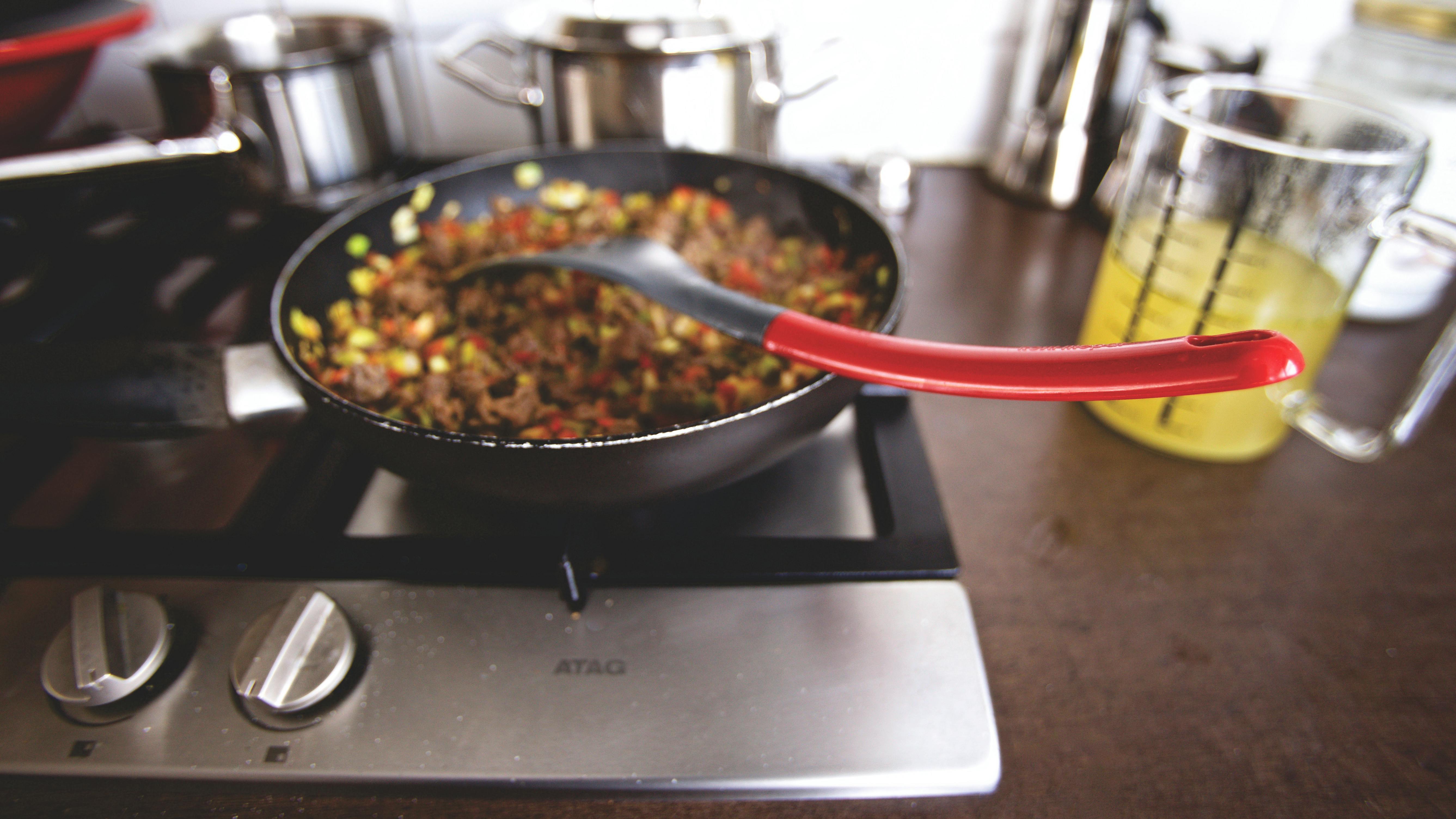
Products available to simplify your selection options
- If you’re building a new home and signing a contract with a builder, make sure you know what the builder’s standard specifications allow. When there’s a downturn in the construction trade, be sure to shop around because often, in an effort to attract customers, the builder will offer an upgrade from a standard workbench to a higher specification workbench at no additional cost.
- Laminates are generally provided as standard for many builder selections. This material is made from many sheets of paper coated with melamine resin and compressed under high pressure with heat to make a strong and durable product. A lighter colored and patterned laminate with a textured surface is recommended to retain its new appearance for many years and can be used in a high wear situation such as a kitchen. Glossy finish laminates in any color and dark solid colors with a matte finish are best used in a low wear situation such as a vertical surface. Remember that you cannot place hot cookware directly on a laminate surface nor is it recommended that you cut directly on a laminate and it cannot be used as a backsplash.
- Rocksolid granite is an engineered stone made from 95% natural granite and 5% polymer with a thickness of 6mm. It has all the benefits of granite, like being heat, scratch and stain resistant, without the same price tag as granite. It’s a great product for renovations because it can be applied directly to an existing laminate workbench and can also be used as a backsplash. Just keep in mind that if you are using the existing cabinets for the renovation, the color of the inner shell cannot be changed, even if the doors are changed.
- Corian is a man-made material that is made from natural minerals and acrylic in combination and was initially used as workbenches in science laboratories due to its resistance to heat, impact, and stains. It is available in a wide range of colors and some manufacturers offer it in their standard ranges for their kitchens.
- Essa Stone/Q Stone/Caesar Stone/Silestone
These are all engineered stones made from natural quartz and a polymer in combination. They have the same advantages as natural stone such as being resistant to scratches, abrasion and heat, but they have a more uniform appearance than natural stones such as granite or marble. Each name is different because different companies produce them.
- Stainless steel is a man-made product that does not warp or corrode and has traditionally been used in commercial kitchens due to its easy-to-clean properties. It is becoming more and more popular in domestic kitchens today where the customer is looking for a more industrial style in their interior. It can also be used as a dashboard.
- Concrete is another man-made product that appeals to those who want that industrial look while still achieving a sturdy surface. It can be poured in many different ways and can have a matte or polished finish. He can even customize the look he wants to achieve with the stones he selects to put in the mix.
- Granite is a natural product that is one of the hardest countertop materials you can choose from. It requires little maintenance, but because it’s a natural product, each slab looks different, so be sure to go out in person and view the slabs before choosing one. Never work from the sample you are given. Also, remember that because granite is a natural product, it will need to be sealed to prevent staining.
When choosing your workbench, make sure you have a clear understanding of your budget, style, or look you’re trying to achieve and what you can and can’t afford to use. If you are trying to be environmentally friendly, then a man-made stone is not depleting our natural resources, but also look at where it is produced. If it is produced locally, it does not create a large carbon footprint for transportation.
Once you’ve decided, look at the largest possible sample of the product you’ve chosen so you have a true color swatch. When you have the sample, see how it works with the floor that you are going to use in the kitchen. Remember in my article “Match or Mismatch: Creating Flow in Your Home” I suggested that you work from your largest area, which tends to be the living room/kitchen floor and the next largest surface is usually the table from the kitchen.